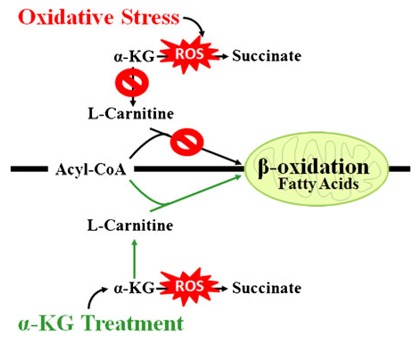Environment
How Aluminum Causes Chronic Disease
As aluminum builds up in your body, your metabolism becomes more and more deranged. It’s likely a major factor behind obesity, and is tied to a wide range of life-destroying chronic disorders. We continue explaining how aluminum does this damage, and then explore how to protect yourself, including providing a list of aluminum-containing food additives.
 by Heidi Stevenson
by Heidi Stevenson
This is the second of two articles. The first is Aluminum Food Additives Cause Obesity. Here, we go into more depth of how aluminum does so much metabolic damage and provide information on how to avoid it, including a list of food additives containing it.
Aluminum’s Damage Gets Even Worse
The reduction in energy production forces cells into another method of producing it. Normally, ATP is produced through an aerobic, oxygen-using, method called oxidative phosphorylation. The alternative method is an anaerobic, non-oxygen using, method called substrate level phosphorylation. Certain substances not normally involved in ATP production are brought into play. While substrate level phosphorylation does work, it’s at a greatly reduced level.
Astrocytes are a type of glial nerve cell in the central nervous system. They have long projections, giving them a star-like shape, which is required if they’re to carry out their functions. Shortage of ATP literally causes astrocytes to change shape. Their long arms retract, making these nerve cells globular in shape. Naturally, this aluminum-induced malformation of astrocytes may cause several neurological diseases.
The limitation of ATP production that results from the forced redirection of energy production has huge implications in lipid processing. Refer to the top part of the graphic in following the following series of events.
 The amino acid α-ketoglutarate (α-KG) is, as the authors state, “drastically reduced in Al-stressed cells”. This is because α-KG is redirected to combat ROS caused by free Fe that results from Al.
The amino acid α-ketoglutarate (α-KG) is, as the authors state, “drastically reduced in Al-stressed cells”. This is because α-KG is redirected to combat ROS caused by free Fe that results from Al.- Diversion of α-KG results in a shortage of L-carnitine.
- L-carnitine and Acyl-CoA are required for the β-oxidation cycle, which breaks down fats for ATP production in mitochondria.
- Therefore, shortage of L-carnitine results in loss of ability to break down fatty acids.
- Fatty acids build up, so they must be stored somewhere.
- This dyslipidemia that results from aluminum’s displacement of iron causes lipids to accumulate in the liver.
- On top of that, anaerobic ATP production, which is also induced by aluminum, stimulates lipid producton.
- The combination of lipid production and loss of lipid breakdown results in fat accumulation.
- The combination of fat accumulation with fatigue also induced by inadequate energy production leads to a host of diseases. Altered lipid metabolism has been associated with neurological diseases.
The bottom part of the graphic refers to the authors’ suggestion that replacing α-KG can be a treatment for the lipids problem created by aluminum. While that may be true, it doesn’t resolve the causative problem: aluminum toxicity. Therefore, we have no idea what further problems might be engendered by focusing on treatment rather than prevention.
Aluminum: Ubiquitous Toxin of Agribusiness and Big Pharma
Although we receive many benefits from aluminum, it’s foolish to ignore the metal’s harmful effects—especially when it’s so devastating to system-wide metabolism. There are certainly many areas where we could readily do without it:
- Humans lived for thousands of years without requiring antiperspirants. Considering the high aluminum concentration in them and their enduring contact with skin, perhaps people should simply give that modern convenience up.
- Antacids are often extremely heavily laden with aluminum, but not all are. Choosing varieties without aluminum should be a no-brainer. Or, better yet, finding and resolving the cause of stomach pain is better yet, because neutralizing acid harms your ability to digest and metabolize food.
- Avoid processed foods that contain aluminum. This can be quite difficult, so here’s a list derived from Food Consumer:[3]
Scroll down until you can see “Cryolite” and “Foaming Agencts”. Note that the word “aluminum” isn’t even in the names of most food additives that contain this toxic agent! Then note that all of these additives have been approved by the FDA. The best advice to take from these facts is that you should simply avoid processed foods. They are not healthy, generally loaded with toxics—not just aluminum—and potentially devastating to your health. - Not only food additives, but also cosmetic products contain high levels of aluminum. Cosmetics, health aids, and skin products commonly contain aluminum. As the above list referencing food additives demonstrates, the metal can even be hidden within the chemistry of a substance, so it can be difficult to know. Nonetheless, it does pay to read the labels.
- Aluminum pots and pans leach Al into your food.
- Baking powder. Although the authors identified it as a source of Al, it isn’t always. Organic baking powder is aluminum-free.
- Vaccines! Do not forget that many, if not most, vaccines contain aluminum. What makes it particularly worrisome is that it’s now known that injected aluminum travels to the brain, passing the blood-brain barrier.
This is far from a comphrehensive list of aluminum sources in your life. It does, though, contain some of the most significant. Be aware and pay attention. As this review documents, aluminum toxicity is a serious health problem. Most people carry toxic loads. Aluminum is likely a significant factor behind the obesity epidemic. Neurological disorders, such as multiple sclerosis—which is clearly associated with lipid dysfunction, as its defining characteristic is the loss of the fatty sheath around nerves—have reached epidemic proportions. Nonalcoholic fatty liver disease is being seen in children! As its name implies, fat deposits in the liver, which can be directly associated with aluminum exposure, is its hallmark.
Our so-called health agencies are clearly not doing their jobs, instead favoring the industries that they’re supposed to be regulating. So, it’s up to each one of us to arm ourselves with knowledge about the risks posed by our modern environment and take steps to keep toxic agents like aluminum at a minimum in our lives. It’s that, or look forward to the misery of chronic disease and associated early death.
Two of the paper’s authors, Vasu D. Appanna and Joseph Lemire, have presented at the prestigious Keele Conference on the biological effects of aluminum.
Sources:
- How aluminum, an intracellular ROS generator promoteshepatic and neurological diseases: the metabolic tale (abstract)
- How aluminum, an intracellular ROS generator promoteshepatic and neurological diseases: the metabolic tale (full text); Cell Biology & Toxicology; Sungwon Han, Joseph Lemire, Varun P. Appanna, Christopher Auger, Zachary Castonguay, & Vasu D. Appanna; DOI 10.1007/s10565-013-9239-0
- Food Additives that Contain Aluminum
Tagged agribusiness, aluminum agribusiness, aluminum anemia, aluminum astrycytes, aluminum atp dysfunction, aluminum baking powder, aluminum big pharma, aluminum chronic disease, aluminum damages metabolism, aluminum deodorant, aluminum fatigue, aluminum food additives, aluminum hepatocytes, aluminum liver disorders, aluminum metabolism, aluminum neurological disorders, aluminum processed foods, aluminum reactive oxygen species, aluminum ros, aluminum vaccines, atp dysfunction, big pharma, keele
-
DebbyBruck
-
/ Heidi Stevenson
-













